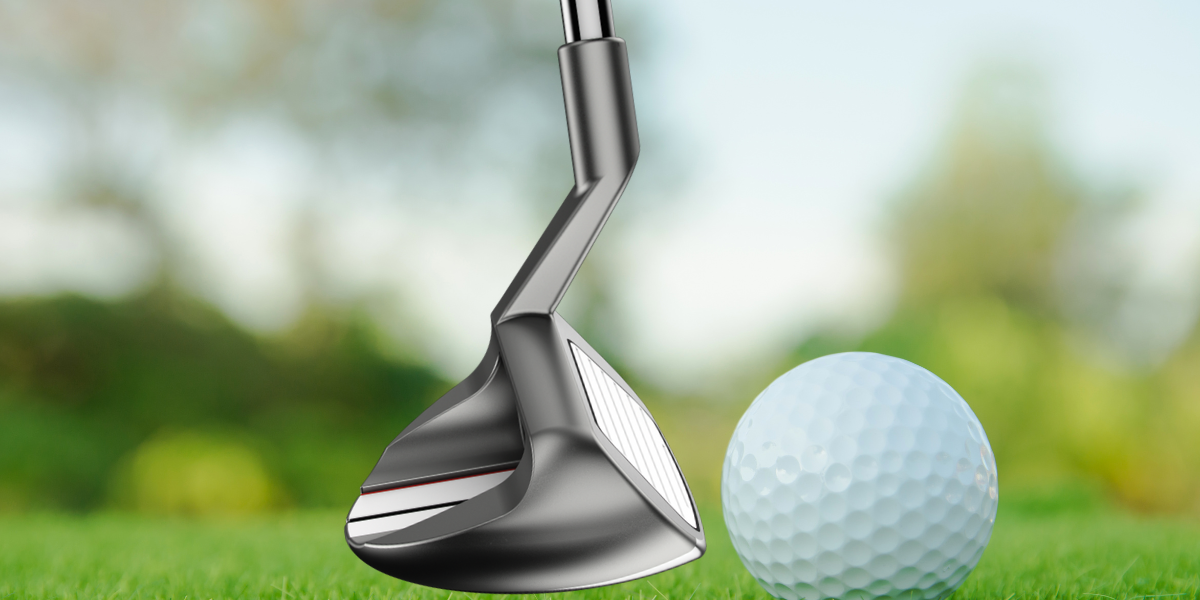Why Are Chippers Frowned Upon in Golf?


Why are chippers frowned upon? This is the million-dollar question among many newcomers and seasoned players as well. Despite their potential to simplify the short game, chippers remain a contentious club among the golf community. To understand why this is the case, we need to delve into the design, purpose, and traditional perceptions surrounding the chipper.
Design and Purpose of the Chipper
A chipper resembles a putter but is lofted like a mid-iron, typically around 30-37 degrees, which is similar to a 7 or 8-iron. This angle allows golfers to make a putting-style stroke on the fringe or just off the green, popping the ball into the air briefly so it can then roll towards the hole.
-
Length and Lie: A chipper’s shaft length is close to that of a putter, allowing the golfer to stand in a similar posture as when they putt. This makes the stroke feel more like a putt than a chip.
-
Loft: The angle of the face is designed to lift the ball slightly off the ground and get it rolling quickly. This can be particularly useful on tight lies or when the ball is sitting down slightly.
-
The head of the chipper is heavier compared to other irons, helping ensure a smoother pendulum motion, much like the swing of a putter.
-
Its grip is thicker, akin to a putter grip, assisting in wrist stabilization during the swing.
Why Are Chippers Frowned Upon?
1. Perceived as a ‘Crutch’:
For purists, golf is as much about skill and technique as it is about scoring. The chipper, in many eyes, is seen as a shortcut or a way to bypass the need to learn proper chipping techniques with a wedge or short iron.
2. Limits Skill Development:
By relying on a chipper, a golfer may neglect to develop the skills necessary to handle various lies and conditions. A traditional wedge, for instance, offers flexibility in terms of opening the face, adjusting stance, or playing different types of shots (like the flop or bump-and-run).
3. Occupies a Crucial Spot in the Bag:
According to the official rules of golf set by the USGA and R&A, a golfer is allowed a maximum of 14 clubs in their bag. Given that players need a variety of golf clubs for different situations – drivers, woods, hybrids, irons, wedges, and putters – adding a chipper can take up valuable space, potentially sacrificing another crucial club.
4. Tradition and Perception:
In a sport steeped in tradition, using a specialized club for a shot that many believe should be mastered with standard equipment can be seen as non-traditional or even gimmicky.
5. Versatility & Redudancy
With the lofts of chippers being in the range of 30 to 37 degrees, they are not far off from the lofts of many standard 7, 8, or 9 irons. This has led many to argue that a chipper is redundant.
A skilled golfer can often use one of their best irons to achieve a similar effect.
Additionally, chippers have limited versatility compared to wedges. An accomplished golfer can do more with a wedge in their hands than with a chipper.
Advantages of Using Chippers

While traditionalists might raise an eyebrow at the use of chippers in golf, these specialized clubs come with undeniable benefits. Chippers, like the renowned Wilson Harmonized Chipper, offer a combination of control and precision for shots just off the green, making them especially useful for those who grapple with the yips or want to add consistency to their short game.
Chippers can offer some unique advantages, especially for amateur golfers or those struggling with their short game. Here are some specific ways in which a chipper may be beneficial compared to traditional wedges or short irons:
-
Lower Loft: Chippers usually have a loft between 30-45 degrees, which is lower than most wedges but higher than a putter. This lower loft helps produce a running shot that lands softly but rolls out more like a putt, which can be easier to control for beginners.
-
Shorter Shaft Length: The shaft length of a chipper is usually similar to that of a putter, making it easier for players to use a putting stroke. This can result in better distance control for players who struggle with the touch needed for wedge shots.
-
Simpler Stroke: Because chippers are designed to be used with a putting stroke, there’s less need to master the variety of swing techniques associated with wedges (like open stance, ball position, and hinge-and-hold techniques). A simple pendulum stroke is usually all that’s required.
-
Consistency: A chipper can offer a higher level of consistency around the greens for high-handicap players or beginners. Because the club is designed for a specific purpose, there’s less room for error compared to executing a perfect chip shot with a wedge.
-
Confidence: Knowing that you have a club specifically designed for chipping can boost confidence. This psychological edge shouldn’t be underestimated, as golf is as much a mental game as it is a physical one.
-
Weight Distribution: Chippers often have weight distribution more similar to a putter, with a larger sweet spot. This can make them more forgiving on off-center hits compared to wedges.
-
Hybrid Functionality: Some chippers are designed as dual-purpose clubs with a putter grip and can be turned around to function as a putter. This might save space in your bag if you’re playing a casual round where strict rules on the number of clubs aren’t enforced.
-
Less Room for Error: With wedges, a slight mistake in clubface angle or swing path can lead to disastrous results like bladed shots that shoot across the green or chunked shots that barely move. Chippers, with their simpler stroke mechanics, can minimize these risks.
-
Roll Control: The angle and design of the chipper are specifically optimized to control the roll after the ball lands. In contrast, achieving the desired amount of roll with a wedge requires a lot more skill and experience.
-
Easy to Pick Up: For players who don’t have the time to practice various wedge shots consistently, a chipper provides a quick and easy way to manage the short game with reasonable effectiveness.
When to Use a Chipper?
Despite chippers being frowned upon by some sections of the golf community, they undeniably serve a functional purpose in specific scenarios on the golf course. Here’s a list of some scenarios when it becomes appropriate to bring out your chipper:
-
Just Off the Green:
- When you’re positioned just outside the putting surface, especially within a range of 5 to 20 yards, a chipper can be your best friend. It’s designed for those short, controlled shots where a putter won’t provide enough lift, but a wedge might give too much.
-
Flat Lies:
- Chippers work best on even terrains. If your ball lands on a relatively flat spot, a chipper can give you a precise, rolling shot that a wedge might make more complicated with its higher loft.
-
Avoiding the ‘Yips’:
- The ‘yips’ refers to the uncontrolled movements or twitches players sometimes develop, particularly during short chip shots or putts. Using a chipper, with its putting-style stroke, can alleviate this problem for some golfers.
Disadvantages of Using Chippers

While chippers can offer some benefits, especially for beginner or high-handicap golfers, there are also downsides to consider. Here are some disadvantages of using chippers:
-
Limited Versatility: Chippers are specialized clubs designed for a very specific type of shot. Unlike wedges, which can be used in a variety of situations including sand traps, rough, and even for full shots, chippers are less versatile and primarily used for short chips around the green.
-
Takes Up Club Space: According to the rules of golf, you’re allowed to carry up to 14 clubs in your bag. Including a chipper means sacrificing another potentially more versatile club, such as an extra wedge or long iron.
-
Skill Development: Relying on a chipper may inhibit your development in learning to use more traditional clubs like wedges, which require a wider array of techniques. This could be a disadvantage in the long run as you face more complex shots or different kinds of greens and terrains.
-
Stigma: In some golf circles, using a chipper might be seen as a crutch, signaling that you’re not a skilled player. While this shouldn’t necessarily affect your decision, the social aspect is something some golfers consider.
-
Not Tournament-Compliant: Some competitions restrict the types of clubs that can be used, which might mean your chipper is not allowed. If you plan to play in tournaments, relying on a chipper in casual play could create a gap in your game.
-
Cost Factor: Adding a specialized club to your bag means an additional expense. Given its limited use, some golfers find that the cost isn’t justified compared to investing in more practice with versatile clubs.
-
Adjustment Period: If you decide later to switch to traditional methods, there will be an adjustment period, essentially requiring you to re-learn techniques for the short game. This could have been avoided had you learned with more versatile clubs to begin with.
-
Shot Limitation: While a chipper is good for a running shot, it won’t help you much if you need to loft the ball over an obstacle or stop it quickly on the green, situations where a wedge would be more appropriate.
-
Learning Curve Conflicts: If you’re taking lessons or aiming for comprehensive skill development, the chipper might conflict with the general instruction and techniques you’re being taught, causing confusion or inconsistencies in your game.
-
Quality Variability: Not all chippers are created equal, and some cheaper options may not offer the quality and reliability you’d find in a well-made wedge.
-
Terrain Limitations: On undulating or sloped greens, or from difficult lies like deep rough or wet conditions, a chipper’s design may not be as effective as a specialized wedge like a lob or sand wedge.
Chippers vs Wedges
- Swing: A chipper requires a putting-style swing, whereas a wedge demands a more full, wrist-involved swing.
- Loft: The chipper has a lower loft than most wedges, making it ideal for rolling shots.
- Use Cases: While both can be used around the green, a wedge provides more versatility in creating different types of shots like flop shots, bunker shots, and full shots.

Patrick Mahinge is a golf enthusiast and the chief editor of Golf Pitches, a website that delivers innovative and data-driven golf product reviews. With a keen eye for detail and a passion for the sport, Patrick has transformed Golf Pitches into a trusted source of information for golfers worldwide. Patrick's expertise lies in his ability to dissect complex golf equipment and present his findings in an engaging, easy-to-understand manner. His reviews are not just informative, but they are also backed by rigorous data-driven methodologies, making them a trusted resource for golf enthusiasts and professionals alike..


